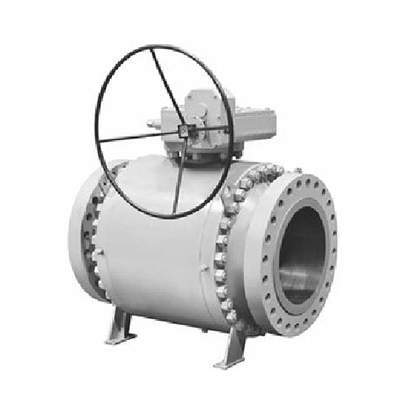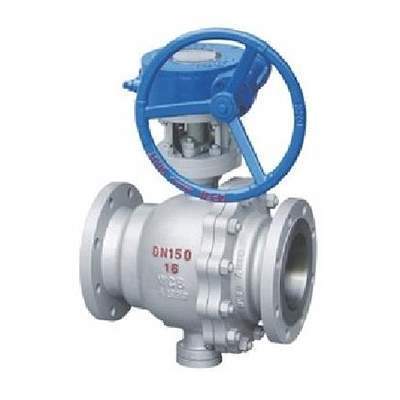Welcome to My Blog!
Before we dive into the content, I’d love for you to join me on my social media platforms where I share more insights, engage with the community, and post updates. Here’s how you can connect with me:
Facebook:https://www.facebook.com/profile.php?id=61563865935136
Now, let’s get started on our journey together. I hope you find the content here insightful, engaging, and valuable.
Introduction

In modern plumbing, HVAC, and industrial fluid management systems, selecting the right valve is critical for ensuring efficiency, safety, and reliability. Among the many valve types available, the ball shut off valve stands out as a versatile and dependable option. Known for its simple yet effective design, this valve type is widely used across residential, commercial, and industrial applications. This blog explores the reasons why a ball shut off valve is an excellent choice for your system, diving into its functionality, benefits, and applications to help you make an informed decision.
What Is a Ball Shut Off Valve?
A ball shut off valve is a type of quarter-turn valve that uses a spherical ball with a hole through its center to control the flow of liquids or gases. When the valve is open, the hole aligns with the pipeline, allowing fluid to pass through. When closed, the ball rotates 90 degrees, blocking the flow entirely. This straightforward mechanism makes the ball shut off valve a popular choice for systems requiring quick and reliable shut-off capabilities. Its design ensures minimal resistance to flow when open, making it ideal for a wide range of applications.
Key Components of a Ball Shut Off Valve
The primary components of a ball shut off valve include the ball, stem, handle, and seals. The ball, typically made of metal or durable plastic, is the core component that regulates flow. The stem connects the handle to the ball, allowing the user to rotate it. Seals, often made of materials like PTFE (Teflon), ensure a tight closure to prevent leaks. These components work together to provide a robust and efficient valve that can withstand high pressures and temperatures in various systems.
Benefits of Using a Ball Shut Off Valve

The ball shut off valve offers several advantages that make it a preferred choice for many systems. Its ease of operation, durability, and low maintenance requirements are just a few reasons why it is widely adopted. Below, we explore the key benefits that set this valve apart from other types.
Durability and Longevity
Ball shut off valves are designed to withstand harsh conditions, including high pressures, corrosive fluids, and extreme temperatures. Materials like stainless steel, brass, or high-grade plastics ensure that the valve remains functional for years with minimal wear. This durability translates to cost savings over time, as replacements and repairs are rarely needed.
Easy Operation and Quick Shut-Off
One of the standout features of a ball valve is its quarter-turn operation. With a simple 90-degree turn of the handle, the valve can be fully opened or closed, providing immediate control over fluid flow. This quick shut-off capability is essential in emergencies, such as leaks or system failures, where rapid response is critical.
Low Maintenance Requirements
Unlike more complex valve types, a ball valve requires minimal maintenance. Its simple design reduces the likelihood of mechanical failure, and the materials used are resistant to corrosion and wear. Regular inspections and occasional lubrication are often sufficient to keep the valve in optimal condition.
Applications of Ball Valves
Ball shut off valves are incredibly versatile and can be found in a variety of systems across different industries. Their ability to handle different types of fluids and gases makes them suitable for both residential and industrial applications.
Residential Plumbing Systems
In homes, ball shut off valves are commonly used in water supply lines, gas lines, and HVAC systems. They provide homeowners with an easy way to control water flow to specific fixtures, such as sinks or toilets, or to shut off the main water supply during repairs or emergencies.
Industrial and Commercial Uses
In industrial settings, ball shut off valves are employed in oil and gas pipelines, chemical processing plants, and manufacturing facilities. Their ability to handle high-pressure fluids and corrosive substances makes them ideal for these demanding environments. In commercial buildings, they are used in fire suppression systems, heating systems, and more.
Comparing Ball Shut Off Valves to Other Valve Types
To understand why a ball shut off valve is often the preferred choice, it’s helpful to compare it to other common valve types, such as gate valves and globe valves. The following table highlights key differences in design, operation, and application.
| Feature | Ball Shut Off Valve | Gate Valve | Globe Valve |
|---|---|---|---|
| Operation | Quarter-turn (90 degrees) | Multi-turn | Multi-turn |
| Flow Control | On/off, minimal flow restriction | On/off, minimal flow restriction | Throttling, higher flow restriction |
| Maintenance | Low, simple design | Moderate, prone to wear | High, complex design |
| Durability | High, corrosion-resistant materials | Moderate, susceptible to corrosion | Moderate, susceptible to wear |
| Applications | Plumbing, HVAC, industrial pipelines | Water supply, oil and gas pipelines | Throttling in HVAC, steam systems |
| Shut-Off Speed | Fast (instantaneous) | Slow (requires multiple turns) | Slow (requires multiple turns) |
This table illustrates that a ball shut off valve excels in applications requiring quick shut-off, low maintenance, and durability, making it a versatile choice for many systems.
Factors to Consider When Choosing a Ball Shut Off Valve
Selecting the right ball shut off valve for your system involves evaluating several factors to ensure compatibility and performance. These include material, size, pressure rating, and the type of fluid being controlled.
Material Compatibility
The material of the ball shut off valve should be compatible with the fluid or gas it will control. For example, stainless steel is ideal for corrosive fluids, while brass is suitable for water and gas applications. Choosing the right material ensures the valve’s longevity and prevents leaks or failures.
Size and Pressure Rating
The valve’s size must match the pipeline’s diameter to ensure proper flow. Additionally, the pressure rating should align with the system’s operating conditions. A ball shut off valve with a higher pressure rating than necessary can provide added safety and reliability.
Installation and Maintenance Tips
Proper installation and maintenance are essential for maximizing the performance of a ball valve. Following best practices ensures the valve operates efficiently and lasts for years.
Installation Best Practices
When installing a ball shut off valve, ensure it is oriented correctly, with the handle accessible for operation. Use appropriate thread sealants or gaskets to prevent leaks, and avoid over-tightening, which can damage the valve or pipeline. Always follow the manufacturer’s guidelines for installation.
Routine Maintenance
To keep a ball shut off valve in good condition, periodically inspect it for signs of wear or leaks. Lubricate the stem if necessary, and operate the valve occasionally to prevent it from seizing. In systems with harsh fluids, ensure the valve material is resistant to corrosion to avoid premature failure.
Environmental and Cost Benefits
In addition to its functional advantages, a ball shut off valve offers environmental and cost-saving benefits. Its durability reduces the need for frequent replacements, minimizing waste. Additionally, its tight sealing capabilities prevent leaks, conserving resources and reducing environmental impact. Over time, the low maintenance and long lifespan of the valve contribute to significant cost savings.
Safety Features of Ball Shut Off Valves

Safety is a top priority in any fluid management system, and the ball shut off valve is designed with features that enhance system safety. Its quick shut-off mechanism allows for immediate response in emergencies, such as leaks or equipment malfunctions. Additionally, the valve’s robust construction ensures it can handle high-pressure conditions without failing, reducing the risk of accidents.
Conclusion
The ball shut off valve is a reliable, efficient, and versatile solution for controlling fluid flow in a wide range of systems. Its durability, ease of use, and low maintenance requirements make it an ideal choice for residential, commercial, and industrial applications. Whether you’re managing a home plumbing system or an industrial pipeline, this valve offers unmatched performance and safety. Ready to enhance your system with a ball shut off valve? Contact us today to explore our high-quality valve solutions and find the perfect fit for your needs.
FAQ
What is a ball shut off valve used for?
A ball shut off valve is used to control the flow of liquids or gases in a system, providing quick and reliable shut-off capabilities for plumbing, HVAC, and industrial applications.
How does a ball shut off valve differ from other valves?
Unlike gate or globe valves, a ball shut off valve uses a quarter-turn mechanism for fast operation and has minimal flow resistance when open, making it ideal for on/off applications.
What materials are ball shut off valves made from?
Ball shut off valves are typically made from materials like stainless steel, brass, or high-grade plastics, chosen based on the fluid or gas being controlled and the system’s operating conditions.
